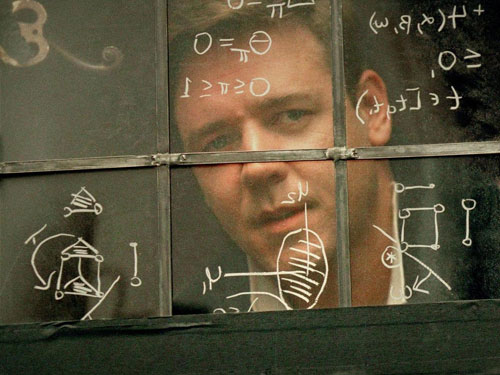Nash equilibrium.
Nešo pusiausvyra.
Maišytos Nešo pusiausvyros koncepciją 1947 m. pasiūlė Džonas fon Neimanas ir Oskaras Morgernšeteris, tačiau tik žaidimams nuline suma, t. y. kad maišytos strategijos Nešo pusiausvyra egzistuoja bet kuriame nulinės sumos žaidime su baigtiniu veiksmų skaičiumi. tačiau J. Nešas pirmasis savo disertacijoje „Nekooperaciniai žaidimai“ (1950 m.) parodė, kad Nešo pusiausvyra turi būti bet kokiame žaidime su baigtiniu veiksmų skaičiumi.
Lošimai.
Constant-sum games correspond to activities like theft and gambling, but not to the fundamental economic situation in which there are potential gains from trade. It is possible to transform any game into a (possibly asymmetric) zero-sum game by adding an additional dummy player (often called "the board"), whose losses compensate the players' net winnings.
The board?
Teko dalyvauti tarptautinėje matematikos konferencijoje, kurioje kinai iš Taivano prieštaravo Nešo pusiausvyros modelio propagavimui, motyvuodami visuomenės nauda, matematiškai motyvuodami.
Nash equilibrium has been used to analyze hostile situations like war and arms races[2] (see prisoner's dilemma), and also how conflict may be mitigated by repeated interaction (see tit-for-tat). It has also been used to study to what extent people with different preferences can cooperate (see battle of the sexes), and whether they will take risks to achieve a cooperative outcome (see stag hunt). It has been used to study the adoption of technical standards, and also the occurrence of bank runs and currency crises (see coordination game). Other applications include traffic flow (see Wardrop's principle), how to organize auctions (see auction theory), the outcome of efforts exerted by multiple parties in the education process,[3] regulatory legislation such as environmental regulations (see tragedy of the Commons),[4] and even penalty kicks in soccer (see matching pennies).[5]
Mathematician John Nash, a Nobel Prize winner whose longtime struggle with mental illness inspired the movie "A Beautiful Mind", was killed in a car crash along with his wife in New Jersey, state police said on Sunday.
Matematikams Nobelis prizų neskyrė.
The Sveriges Riksbank Prize in Economic Sciences in Memory of Alfred Nobel 1994
John C. Harsanyi, John F. Nash Jr., Reinhard Selten
Bertrand paradox.
"A Beautiful Mind"
2015-05-24
Užsisakykite:
Rašyti komentarus (Atom)






Komentarų nėra:
Rašyti komentarą